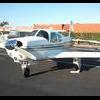To overhaul or not?
-
Members Online
- kortopates
- BaldEagle
- DXB
- Tyler G
- Glen S.
- 885EW
- cliffy
- ronr
- acekng1
- compjtc
- Ragsf15e
- hammdo
- KSMooniac
- UteM20F
- N201MKTurbo
- LANCECASPER
- TCC
- Brian Coate
- Scottknoll
- corn_flake
- Dwb62
- Flash
- Immelman
- EricJ
- FlyingDude
- Rick Junkin
- Bunti
- navysix
- DonMuncy
- rahill
- GMBrown
- ChuckSchneider
- alextstone
- Lax291
- M Terry
- avrojockey


Recommended Posts
Join the conversation
You can post now and register later. If you have an account, sign in now to post with your account.